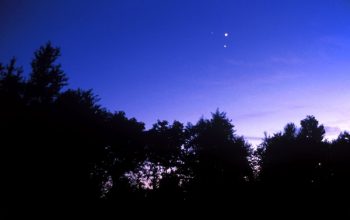Tuesday, February 2nd
Spot the bright star Regulus not too high above the eastern horizon. The Sickle of Leo- shaped like a backward question mark- appears to the upper left of Regulus. Come springtime, all of the constellation Leo will be visible high in the sky.
Wednesday, February 3rd
Two stars flank the waning last quarter Moon. About 6 degrees to the right of the Moon is Spica, and brighter Arcturus is 30 degrees to the upper left. Depending on your location, the Moon should rise around 11 p.m.
Thursday, February 4th
The last quarter Moon occurs exactly at 1:47 p.m. It rises around midnight (location depending), and is still flanked by Spica to the upper right and Arcturus to the upper left.
Friday, February 5th

As the sky begins transitioning from the winter to spring view, make sure to appreciate the biggest globally recognized asterism, the Winter Hexagon. Look for it across the eastern and southern sky. Begin with Sirius at the bottom of the hexagon, and climb around clockwise to see Procyon, Pollux, Castor, Menkalinan, Capella, Aldebaran, and lastly to Rigel in Orion’s foot (see image above). Bright red Betelgeuse shins just shy of the center of the hexagon.
Saturday, February 6th
The star Algol fades to its minimum brightness for a couple of hours tonight, going from its usual 2.1 magnitude to a magnitude 3.4. 9
Sources: EarthSky, Sky and Telescope


